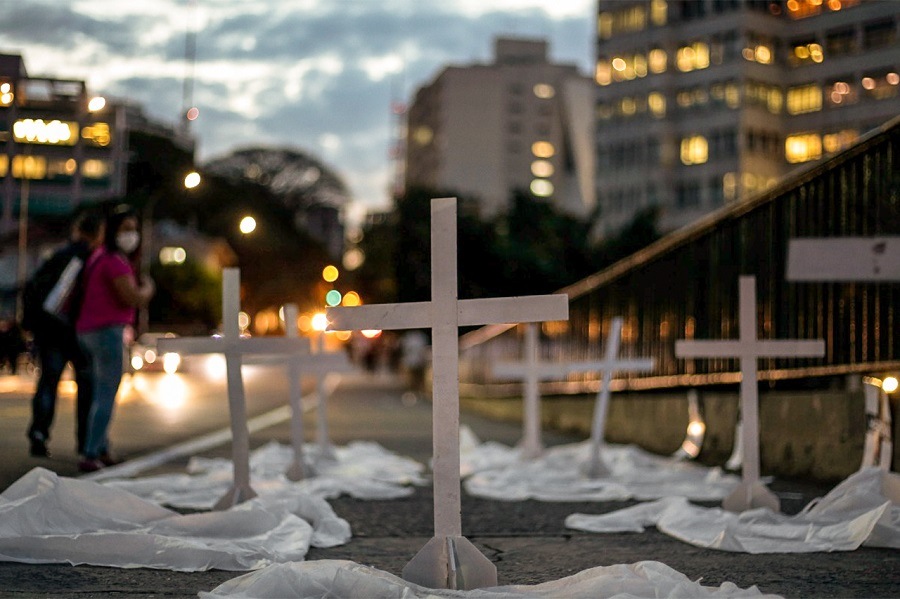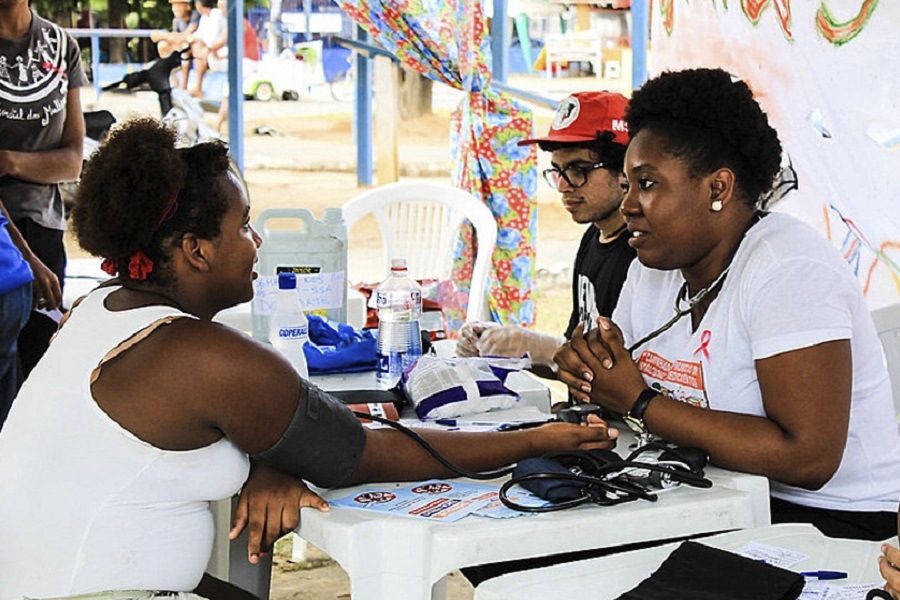RIO DE JANEIRO, BRAZIL – On May 4th, a federal district court of Rio de Janeiro ruled that notifications of confirmed cases and deaths due to the coronavirus must include information on the race and color of those infected.
The injunction provided that both the federal government, the municipality and the State of Rio de Janeiro comply with this ruling. The decision sought to correct the gap in data regarding the race of the infected and victims of covid-19, since at least one-third of available notifications from the Ministry of Health do not include this information. On Friday, May 14th, Rio’s courts suspended the injunction at the request of the federal government.

The case ultimately brought to light the lack of control over data on the pandemic in Brazil and on the groups most affected by the virus. In the May 4th ruling, Federal Judge Dimitri Vasconcelos Wanderley stressed that “the adequate collection of data is crucial for the implementation of protocols to mobilize the population to contain the spread of the virus and the development of adequate public policies for treating the affected population.”
In theory, the decision would be unnecessary, since the Ministry of Health employs two ordinances that regulate the policy of integral assistance to the black population, requiring the registration of race/color in all notifications referring to diseases. This was one of the federal government’s arguments to overturn the injunction.
It also argued that the court injunction would suddenly force health officials “to change their activities to promote compliance with what the authors – without any planning – consider appropriate.”
However, the Ministry of Health has released incomplete data despite the guidance it claims to follow. In the only epidemiological report containing data on the race of infected and victims of covid-19 on May 9th, with data compiled up to May 8th, 30 percent of deaths lacked this information. Until that day, Brazil had officially recorded 9,897 deaths.
The graph provided by the portfolio suggests that 47 percent of victims were white, 42 percent were mixed/race, and seven percent were black. However, the Ministry reports that 2,896 deaths out of this total, i.e., 30 percent of deaths recorded up to May 8th, did not include race. Asked as to why not all notifications are completed, the press office replied that it would consult the technical area.
The legal battle exposed the historical negligence regarding the health care of more than half of Brazilians who today declare themselves black or mixed/race. “We ask for compliance with the rules already in place,” explains Silvio Almeida, president, and attorney at the Luiz Gama Institute, an NGO working to defend the rights and guarantees of minorities and complainant in the petition, along with the Federal Public Defender.
“In the absence of such compliance, more stringent measures may be taken, such as the accountability of public officials who are directly in charge of data collection,” he says, also an attorney and professor at the Getúlio Vargas Foundation (FGV) and Duke University in the United States.
Federal public defender Rita Cristina de Oliveira points out that, although this record is obligatory on paper, the Ministry of Health’s own IT system creates a loophole for this oversight.
“In the tool, if this race/color data is not filled in, the system is fed the same way. In other words, it doesn’t block because these specific data weren’t inserted,” she says. “But what struck us most in the context of the pandemic is that, if this historical negligence were not enough, a simplified notification form was created for covid-19 patients that didn’t even contain a field for entering race/color data”.
Only the Acute Severe Respiratory Syndrome patient form, used in the case of patients who had no direct contact with positive coronavirus cases, features this race/color field.

Silvio Almeida explains that this data is crucial for the development of public policies and strategies to fight the pandemic. “The pandemic, which is a public health problem, tends to worsen considerably as a result of the inequality typical of Brazil,” he says.
“It is easy to see that black people are more affected in the context of the pandemic. Public defender Rita Cristina adds: “Racism in the health system cannot be ignored either, particularly when the death of many peripheral citizens stems from the lack of access to adequate care, equipment, and basic assistance,” she says.
In São Paulo, the last epidemiological report from the state capital that includes this race/color cutout dates back to April 30th. It reports that almost 79 percent of the 11,025 confirmed cases of coronavirus at that time had not been filled out.
The lack of information occurs at a time when a map of the city shows that it is in the peripheries where the majority of those affected by the disease are located, as Mayor Bruno Covas acknowledged in a press conference last week. “The number of deaths is increasing every week in the periphery, Brasilândia, Grajaú, Sapopemba, Cidade Tiradentes, demonstrating how much this is spreading in the periphery,” he said. It is in the periphery that most black families live.
The São Paulo State Health Secretariat, in turn, never submitted such data. But at the request of the report, it conducted a survey and pointed out that of the total number of deaths on May 12th (3,949), 43 percent were notified as white race/color, 17 percent mixed/race, and five percent black.
However, 34 percent were not recorded with this data. Among those infected (46,131 in total) on the same date, there were 38 percent white, 14 percent mixed/race, and four percent black. However, 43 percent of the forms were not filled out with data on race.
Marcia Lima, professor of sociology at USP and coordinator of the Center for Research and Training in Race, Gender, and Racial Justice at the Brazilian Center for Analysis and Planning (CEBRAP), explains that the absence of these data is not a phenomenon that emerged with the pandemic.
“Inequality has played a crucial role in shaping the data this way,” she says. “It is not an effect of the pandemic. The pandemic finds this inequality and will exacerbate it”. She cautions that there are other factors other than underreporting that divide those who have privileges from those who do not. “All of these comorbidities that place people in the risk group depend on a diagnosis. That is, knowing whether or not you are in the risk group is a privilege in itself”.
Both the Rio de Janeiro State Health Secretariat and the municipality were sought by the report since Justice’s decision directly mentions these areas. The city of Rio de Janeiro reported that “the numbers of ignored and blanks are high because, unfortunately, this is still a neglected data in filling out the notifications.”
The press office also provided figures with the number of cases where race/color was ignored but failed to explain on which notifications they were collected, as they did not match the total number of cases in the city. The State of Rio was unable to reply.
“Color comes first”
In an attempt to guide and protect the most vulnerable populations, institutions, and organizations are developing initiatives to provide information and enlighten residents from the cities’ outskirts. Last week, the Brazilian Society for Family and Community Medicine (SBMFC), through the Black People’s Working Group, published the second edition of a booklet with guidelines for the prevention of coronavirus in favelas and peripheries.

In the document, there is a particular chapter on “Black men and their masks,” written by psychologist Jeane Sasyka Campos Tavares, Ph.D. in public health and professor at the Federal University of Recôncavo da Bahia (UFRB).
The booklet explains that the covid-19 protection masks worn by black men have entered the list of accessories that can be considered “suspect” by the police, as well as caps, hoods, helmets, and even umbrellas, which are props that cover part of the face.
“This issue of the black man being placed under suspicion all the time is part of the daily life of the black population in Brazil,” the psychologist said. “Regardless of whether they come from a high social class, education, or position, color comes first for people.”
Therefore, the guidelines in the booklet are objective. “If, for any reason, you have access to disposable industrialized masks, choose those. They are associated with health, not crime”. Another suggestion is to wear masks that are distributed locally in the community.
“It’s important that you are quickly identified as being part of this territory,” says the text. In general, what the wearing of masks or the underreporting by race and color of the sick and dead by covid-19 shows, according to the psychologist, is the false notion that there is no racism in Brazil.
“The major challenge we face here is the fallacy of racial democracy,” she says. “Historically, we disregard racism all the time.”
Source: El Pais

